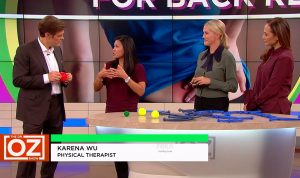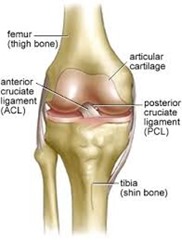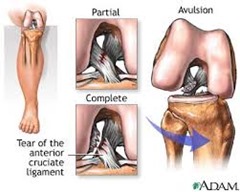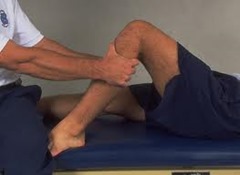 ActiveCare Physical Therapy, PC
ActiveCare Physical Therapy, PC
29 West 38th Street
Suite 601
New York, NY 10018

The Hard Truth About a Torn ACL
Until they suffer a devastating knee injury, many people don’t even know they have an ACL. What is it, and what does it do? One of the four major ligaments of the human knee, the Anterior Cruciate Ligament (ACL) binds the back of your thigh bone, or femur, to the front of your shin bone or tibia, and is the primary stabilizer of your knee.
Most often seen in athletes, a torn ACL can be a debilitating, often career-ending injury, causing destabilization of the knee which can only be repaired through surgical reconstruction. Injuries to the ACL range from small tears to a completely torn ligament, usually occurring when the knee is bent backward or too much to one side.
 Women who play sports are more likely than men to suffer ACL injuries due to musculoskeletal differences and the tendency of female athletes to land and turn during movement with their knees straight, while males tend to do so with their knees bent. Also, certain female hormones may cause the ACL to periodically become relaxed and loose.
Women who play sports are more likely than men to suffer ACL injuries due to musculoskeletal differences and the tendency of female athletes to land and turn during movement with their knees straight, while males tend to do so with their knees bent. Also, certain female hormones may cause the ACL to periodically become relaxed and loose.
Treatment for ACL Injury
The most conservative treatment for a torn ACL is physical therapy to strengthen the hamstring and quadriceps. Since the ACL’s primary function is to stabilize the knee when extended and when surrounding muscles are relaxed, many people can function quite well without an ACL.
Over time, however, the tibia and femur may start to rub against each other, resulting in cartilage damage inside the knee. Lack of an ACL also increases the risk of further knee injuries such as a torn meniscus, so further participation in sports may be out of the question. For this reason, many athletes suffering a torn ACL elect to undergo surgery.
Types of ACL Surgery
If an ACL is severely torn, or in the case of an athlete wanting to participate sports, surgery may be required. Since there is no blood supply to the ACL it is unable to heal on its own. Reconstructive surgery is performed after the swelling and inflammation have gone down, usually several weeks after the injury.
Reconstructive surgery uses either one’s own tissue or that taken from a tissue bank to replace the torn ACL. These are known as autografts and allografts, respectively. The benefit of using donor tissue is primarily reduced pain after surgery from the site of tendon harvesting. Also, some patients may develop chronic patellar tendonitis after having a graft taken from that area. The primary benefit of the autograft method is a reduced risk of infection, which occurs more frequently with donor tissue.
Grafts may be taken from the patella tendon or the hamstring. In the Patella tendon method, the surgeon removes the central third of the patella tendon along with a small piece of bone at each end where the tendon attaches to the kneecap and tibia. Many patients experience post-operative knee pain due to the removal of bone from the kneecap, however this method results in a much stronger bone-to-bone attachment, and the patella tendon is relatively the same length as the ACL.
In the hamstring graft method, the surgeon wraps two tendons from the hamstring muscles together to create a new ACL. While this new ligament takes longer to attach without the benefit of bone-to-bone healing, there is less post-operative pain and a smaller incision.
 Six to ten months of physical therapy will be required after either type of surgery before an athlete can return to his or her sport. Your physical therapist can give you the best assessment of whether or not your tendon graft is sufficiently healed and stabilized. Attempting to rush this rehabilitation period may lead to further injury and permanent destabilization of the knee.
Six to ten months of physical therapy will be required after either type of surgery before an athlete can return to his or her sport. Your physical therapist can give you the best assessment of whether or not your tendon graft is sufficiently healed and stabilized. Attempting to rush this rehabilitation period may lead to further injury and permanent destabilization of the knee.
It is important to keep in mind that after a suffering a torn ACL, whichever type of surgery you choose – if any, you will still be susceptible to the early onset of chronic degenerative joint disease in that knee.
